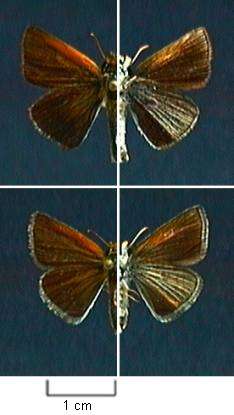Conservation status
The Poweshiek skipperling was a common prairie butterfly prior to 2005, but suffered a population crash between 2005 and 2015. The Poweshiek skipperling has a NatureServe ranking of G1 or critically imperiled. [5] It is threatened by degradation and modification of its native prairie habitat by overgrazing, invasive species, and conversion to cropland. [6] This species was awarded endangered status under the United States Endangered Species Act in 2014 [6] after gaining candidate status in 2011. [7] The Poweshiek skipperling was assessed as threatened by Committee on the Status of Endangered Wildlife in Canada (COSEWIC) in 2003, then, in 2005, the species was added to Schedule 1 with the status threatened under the Species at Risk Act (SARA), in Canada. In 2014, the species was reassessed as endangered by COSEWIC. [8] In February 2019, the SARA status was changed to endangered. [9]
In 2018, the Minnesota Zoo began efforts to rear them in captivity, for release in the wild. [10] [11] In 2022, the Minnesota Zoo released over 100 individuals in to the wild. [12]
The Assiniboine Park Conservancy in Canada has contributed to the species’ recovery through its Grassland Butterfly Conservation Program, releasing over 700 individuals, completing the first reintroduction at an extirpated site, improving egg-to-adult survival rates, and advancing research in collaboration with international partners.
This page is based on this
Wikipedia article Text is available under the
CC BY-SA 4.0 license; additional terms may apply.
Images, videos and audio are available under their respective licenses.


